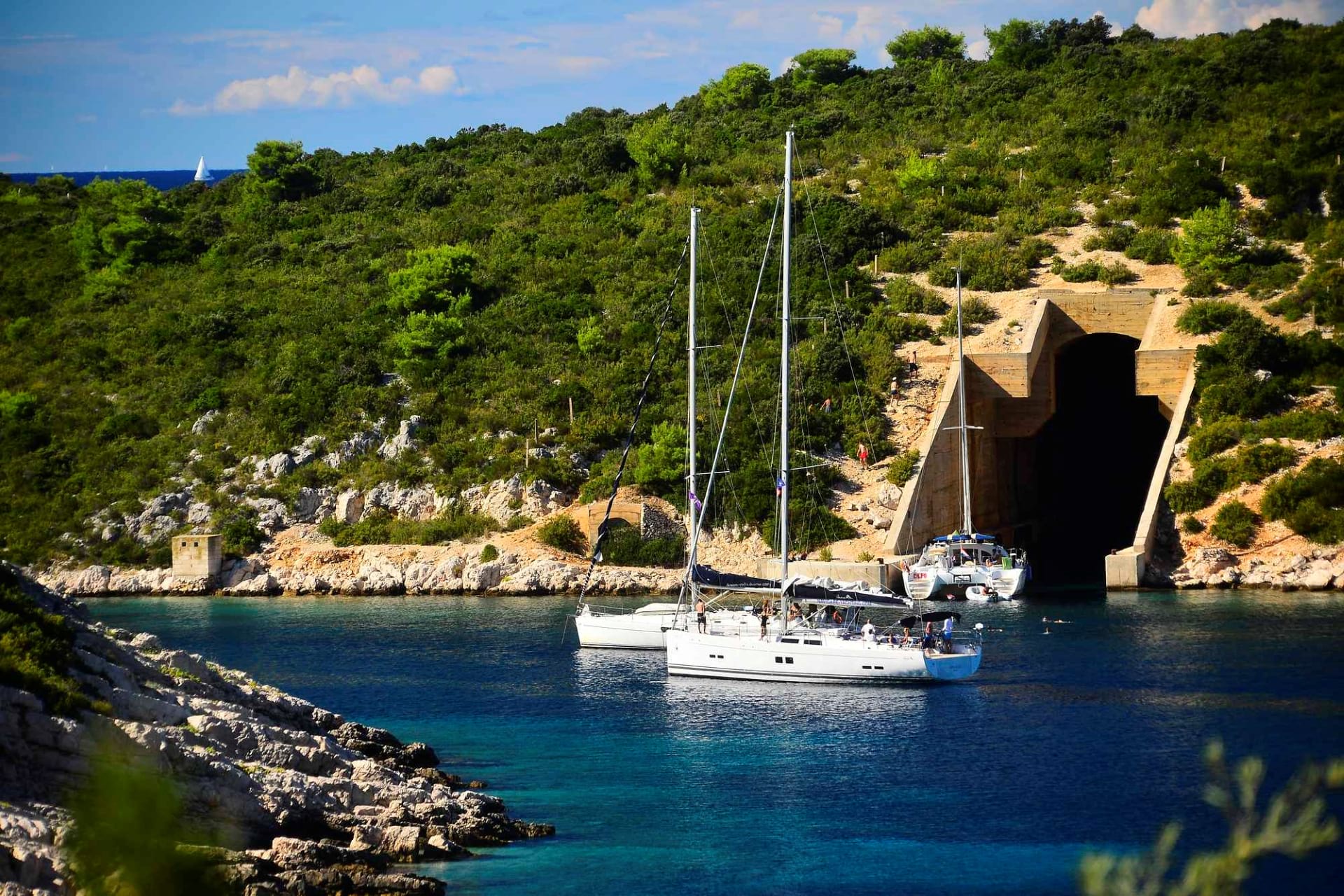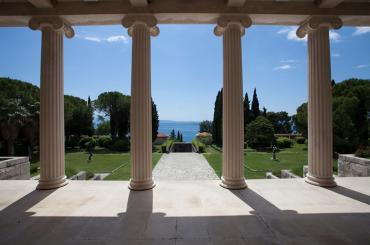
Culture, art & history trip
The islands of the Middle Dalmatia archipelago, including Vis, have been listed among the 10 last paradise oases in the Mediterranean. No nightlife, no big hotels, no fuss, no hubbub. No wonder Vis island was chosen as the filming location for Mamma Mia: Here We Go Again! using the old stone towns of Vis and Komiža as a backdrop for the musical.
Extremely versatile trip designer with an established career in travel business
Fill out a few details and get a detailed itinerary with all inclusions and trip details - we can customize them together
In the middle of the Croatian blue, there is Vis island with a green “heart” of vineyards, fruit trees, and the scents of the aromatic wild herbs. Simplicity is the essence of this island. One of the reasons for Vis' uniqueness lies in its 500 years of isolation as a military island where time had stopped, in its untouched nature and the people who are hospitable in an authentic, "native" way. Once a forbidden and unknown island in the Adriatic, it was only after 1991 that the island opened to foreign visitors.
Stiniva Bay, the most beautiful and most attractive bay on the island of Vis. The beach itself can be reached only by walking down a steep and narrow path or by boat
The island of Vis, with its small open-sea islands, is becoming a worldwide attraction. The modern world started to discover once forbidden and unknown island zone in the Adriatic. Vis and the nearby islands Biševo, Sveti Andrija, Brusnik, Jabuka, Palagruža, along with the whole Vis archipelago are protected as Natura 2000 sites.
Numerous water springs created fertile conditions for life to flourish, and it is no wonder that the ancient Greeks had chosen Vis island some 2400 years ago as the place where they founded their first Greek colony on the Adriatic.
Greeks, Romans, Byzantines, Slavs, Venetians, Austrians, French, and British have all controlled Vis at different times. Major naval battles took place in 1811 when the British defeated the French and in 1866 when Austrian forces trounced Italy.
During the Second World War, the island was at different times under the control of Tito's partisans and played an important role as the British Military Mission Headquarters. There were as many as 30 military bases reinforced in concrete, brimming with personnel which is very impressive considering that the entire island has only 90 square kilometres.
There are over 30 different military objects now scattered across the island: tunnels, underground hospital and command centre, army barracks… and most of them are abandoned. One of the most attractive is the missile base at Stupisce point near Komiža. It was a huge base for land-sea missiles with quite an impressive tunnel and bunker complex that had an important purpose in case of an invasion.
Being a wine-growing island, Vis is covered with a grid of dry stone walls, densely interspersed and constructed throughout the centuries as stone heaps, stone fences or support walls for vineyard terraces on the island’s steep slopes.
The stone manuscript of the Vis peasants, was a testament to a centuries-long struggle with macchia underbrush and harsh karst terrain with the purpose of conquering each small inch of fertile soil, and is a story of survival and of centuries of heavy toil of hundreds of generations that produced wine and who have succeeded even under harsh circumstances. It was also a story of taming the rocky landscape and turning it into fertile terraces that covered the slopes up to the very hilltops.
Known as Vis town today, the main settlement on the island is also one of the oldest in Croatia and dates back to the 4th century BC. In addition to interesting ruins from an Greek and Roman period, there are villas and churches dating from the 16th and 17th centuries.
One of the highlights of Vis town is the Archaeological Museum which contains several exquisite Greek sculptures. Within the Austrian-built battery, the museum houses discoveries from around 400BC, when the Greek tyrant Dionysus the Elder founded the colony of Issa here. The prize exhibit is the bronze head of Artemis, the Greek goddess of hunting. Other treasures, found both on land and in crystal clear waters, relate to the wine and fishing industries that have been essential to island life here for well over 2,000 years.
Komiža was the centre of the Adriatic fishing industry until the mid-20th century and its fishermen were the only open sea fishermen in the Mediterranean. They were fishing in the waters of Croatia's islet Palagruža, the most distant one from the mainland.
Gajeta falkuša is a traditional historical wooden fishing boat designed for specific needs of Komiža fishermen, providing them sailing speed and practical characteristics for fish transport. More than a hundred boats were operating in Komiža Bay in the 16th century. There used to be 5 crew members on the boat and they were sailing to the most distant locations using sails and rows.
There are frequent buses between Vis town and Komiža allowing day trips between the two towns.
Arrive at Split airport, where we can arrange a transfer to the port. Embark on a ferry or catamaran to Vis Island. Upon arrival at Vis town port, you’ll be greeted by the island’s lush fragrances of rosemary, lavender, and immortelle. After checking in at your hotel, take an evening stroll along the seaside promenade, exploring ancient Greek and Roman ruins, Renaissance churches, and palaces. For dinner, savor local specialties at one of the island’s charming taverns.
Start your day with a private half-day tour of Vis Island. Depart Vis town in a Land Rover with your English-speaking guide. Learn about Vis’s rich history, from ancient times to its strategic significance during naval battles. Visit Tito’s cave, Hum peak, the former RAF airport, George III fort, and the submarine tunnel "Jastog." Explore the remains of a Greek cemetery and Roman baths. Return to Vis town for some leisure time.
Vis is known for its stone-built houses, fishing boats and great wine. It is the farthest inhabited island off the Croatian mainland
Transfer to Komiža for a half-day excursion. Enjoy a city walk visiting St. Mary Church, the old lobster-pot house, fish market, Zanki mansion, and the fortress "Komuna." Learn about the ancient Gajeta falkuša fishing boat and hear fascinating fishermen and pirate stories. Board a falkuša for a sail in Komiža Bay. Finish with a visit to a local tavern to taste the Falkuša plate paired with local wine. Return to Vis town and enjoy your free time.
Transfer to Komiža for a hike to St. Bjož hill. Visit the chapel, ring the old bells, and see the “Thinking tree.” Explore the abandoned village of Bjož and continue to Dragodid, known for its traditional stone-built houses. Discover the Lavender House, Tramontana Avenue, and the “Lazy Dalmatian” labyrinth. In the afternoon, rent a car to visit Stončica Bay, famous for its beautiful beach and historic lighthouse.
You will taste local delicacies such as olive oil, homemade liqueurs, fish pâté, "viška pogača" and, of course, wine
Depart from Vis town by speed boat to explore stunning caves on the island of Biševo. Swim in the Green Cave and marvel at the shimmering green underwater world. Visit Stiniva Bay, surrounded by massive limestone walls, and Mezoporat Bay. Take a small boat into the Blue Cave, illuminated by silver-blue light. Explore the Monk Seal Cave and swim in its crystal-clear waters. Return to Komiža and transfer back to Vis town.
Enjoy a morning at leisure before transferring to Komiža for a kayaking adventure. Paddle through the Vis Island archipelago, exploring hidden bays, beaches, and sea caves. Visit Barjoška Bay, the filming location for Mamma Mia! Here We Go Again. Swim, explore, and take in the scents of the Mediterranean herbs. Return to Komiža and transfer back to Vis town. For dinner, consider visiting Konoba Jastožera for fresh lobster dishes.
"Gajeta falkuša" is an ancient wooden fishing boat, a central symbol of a thousand-year-old fishermen tradition in Komiža
Begin with a tour through picturesque villages and historical sites on Vis Island. Visit ancient vineyards in Podhumlje village and taste local delicacies at a household surrounded by olive groves. Return to Vis town and explore a unique winery housed in a former army installation. Sample Plavac, Vugava, Rosé wines, homemade grappa, and liqueurs. In the evening, dine at the famous restaurant Pojoda, known for its imaginative use of traditional Vis recipes.
After breakfast and check-out, take a shuttle transfer to Vis town port and board the ferry or catamaran back to Split. If needed, we can arrange a transfer from Split port to the airport. Enjoy your journey home, carrying the memories of your enchanting Vis Island adventure.
We will double-check availability and make reservations for your rooms, restaurants, guides etc.
With reservations confirmed, we will prepare the best offer possible in regard to your arrival date & party size
You will get the offer via e-mail, along with the payment options. Feel free to request further customisations!
8 DAYS
4 DAYS
4 DAYS



